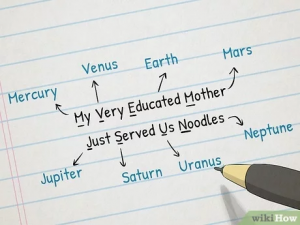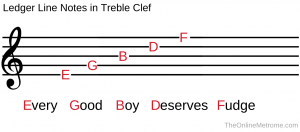Have you ever heard of Simon Reinhard? He’s a two-time World Memory Champion, European Memory Champion and German Champion. He also holds the Guinness World Record for memorizing 92 digits in 1 minute (Simon, 2020). But how does he do it? In the age of information, memory techniques are your secret weapon!
Also known as mnemonic devices – from the Greek word mnemon, meaning “to remember”- these strategies can be helpful for a person who wants to improve their ability to remember something – even after a concussion. Mnemonic devices are techniques developed thousands of years ago by the ancient Greeks to help them memorize long speeches, and these tricks were later adopted by the Romans who kept so-called memory slaves “graeculi” (little Greeks), and whose purpose it was to memorize all kinds of things (Kuepper-Tetzel, 2020; Psych Central, 2016).
Even though these techniques can be traced back in time, it might surprise you to know that we all use them, even if we don’t know their names. Mnemonic devices are simply ways of memorizing information by making them “stick” in our brain so that we can recall them more easily later (Psych Central, 2016).
But becoming successful in the use of mnemonics depends on two main factors: first, you have to figure out the right technique, and then you need to take the time to practice.
Effective mnemonic devices also follow three main principles (Kuepper-Tetzel, 2020):
- Organize the material you want to learn in a systematic way
- Elaborate on the material at hand
- Use mental imagery
So what are some examples of mnemonic devices commonly used by memory athletes like Reinhard?
LET’S EXPLORE!
Imagine you have been asked to memorize a random list of words, e.g. MONKEY, BOOKS, SNOWBALL, BIKE…
With the memory palace, it’s useful to follow these steps:
- The first step is to imagine yourself in a very familiar location, such as your home.The idea is that this location is one that you know by heart, that you could picture with your eyes closed, and that you could recall without barely thinking.
- So what next? Imagine yourself walking through your home, starting your route from the entrance, for example.
- Using your mind’s eye as you walk through the rooms in your home, place the words from the list you want to remember in specific locations of your home.At the same time, get creative and think of some bizarre, stand-out images that will help you retrieve the information later (Kuepper-Tetzel, 2020).
LET’S TRY IT OUT:
Words to remember: MONKEY, BOOKS, SNOWBALL, BIKE…
You see the door to your home and you think it would be a great idea to replace the doorbell with a MONKEY. You remove the doorbell and place a monkey at the front door. Then you go inside your home, you take off your shoes in the hallway and you place them on top of a huge pile of BOOKS (this way they will be easy to reach). Then you hang your coat on a hanger and notice there is a mountain of SNOWBALLS in the closet. You get hit in face with a snowball, so you close the door and make your way to the living room where you throw your huge BIKE onto the sofa and take a seat on it.
Later, when you want to retrieve this list of seemingly random words, you can go into your memory palace and retrieve the words from the locations in your home where you placed them.
The memory palace organizes the words or material you need to memorize in a systematic order, it allows you to elaborate on the material by adding meaningful or bizarre content, and mental imagery (Kuepper-Tetzel, 2020).
Simply put, an acronym is a word that is formed using the first letters in a name or phrase (Psych Central, 2016). Everyday acronyms you’re probably familiar with include:
- NASA – National Aeronautics and Space Administration
- PIN – Personal Identification Number
- POTUS – President Of The United States
- YOLO – You Only Live Once
Similarly, you might be familiar with acrostics. This technique uses certain letters in a word to form a series of phrases or sentences, to help remember information (Psych Central, 2016). Not sure what this would look like? Chances are you probably used some of these to remember bits of information.
LET’S HAVE A LOOK:
Think back to the first time you learned the planets of our solar system. As a child, remembering 8 planets can seem a bit much. Eventually you did it – but how?
Does the acrostic below ring a bell?
My Very Educated Mother Just Served Us Noodles

Image: The Online Metronome
LET’S TRY ANOTHER ONE!
Have you ever learned to read music? You might have used this acrostic to remember the names of the lines:
Every Good Boy Deserves Fudge

Image: Wikihow
Rhymes are sayings that share a common sound at the end of the phrase or line. These can make remembering information easier because they can be stored in the part of our brains associated with sound or acoustic encoding (Psych Central, 2016).
Maybe you’ve seen this one before:
Thirty days hath September, April, June, and November; All the rest have thirty-one, Save February, with twenty-eight days clear, And twenty-nine each leap year.
You likely do this everyday without consciously thinking of it. Chunking involves breaking down larger pieces of information into smaller, organized “chunks”, that can be more easily managed (Psych Central, 2016).
Think of the last time you tried to remember a 10-digit phone number. Most people can remember a phone number by breaking it up into 3 smaller chunks – the area code, followed by the first 3 digits of the number, and then the last 4 digits. E.g. 416-555-1234
Because our short-term memory is limited to holding 7 items of information at any one time, by grouping larger bits of information into smaller containers, we can help our brains remember more, and more easily (Psych Central, 2016).
The key to successful chunking is identifying patterns in the information that will help us to group it into smaller chunks, for example, trees and plants are green, crickets and ants are insects, etc.
Categorizing information in this way helps us to recall the information later because rather than having to recall the individual details, all we have to focus on remembering are the categories (fewer items) which will cue our memories in the future (Psych Central, 2016).
For more on CHUNKING, click here
Visual imagery can help us to remember information by pairing certain details that we want to recall with an associated image in our minds (Psych Central, 2016). Think of when you first learned the alphabet – our books showed us that ‘A’ is for apple, ‘B’ is for banana, ‘C’ is for carrot, etc. A similar technique can be used to remember the name of someone you just met.
LET’S TRY IT:
Harry – we can imagine a big grizzly bear with lots of fur
Peggy – we can imagine a pirate with a wooden peg leg
Kuepper-Tetzel, C. (2020). Bad Memory? Try the Techniques of the Ancient Greeks. The Learning Scientists. https://www.learningscientists.org/blog/2017/2/2-1?rq=mnemonics
Psych Central. (2016). Memory and Mnemonic Devices. https://psychcentral.com/lib/memory-and-mnemonic-devices#1
– Simon. (2020). -Simon. http://simonreinhard.com/
Curious to see some of these memory tricks in action?
Check out the TedX Talk with Ricardo Lieuw below to see how he combines some of the techniques we described above to have the audience remember a list of 10 random words!
Last Updated: January 2021
